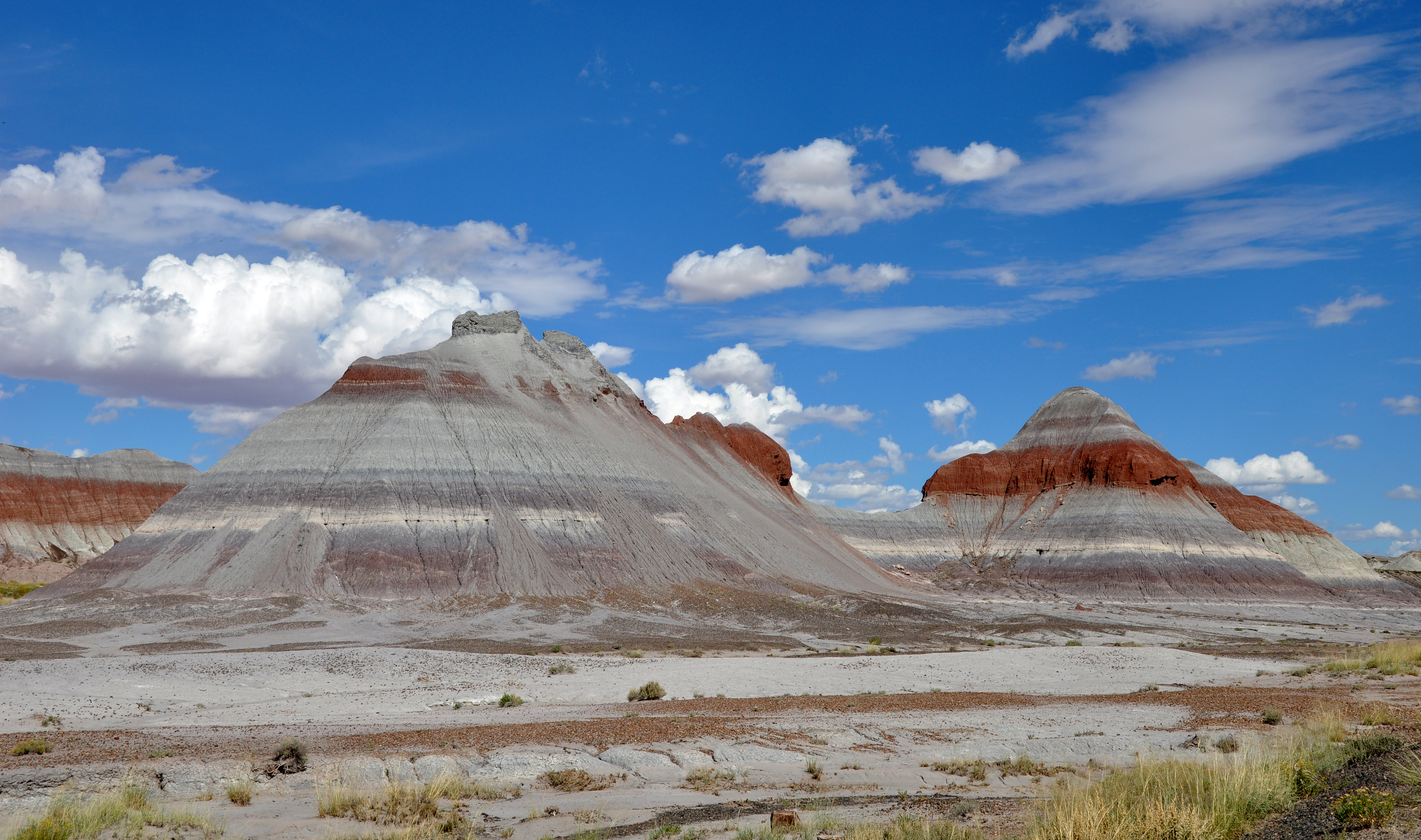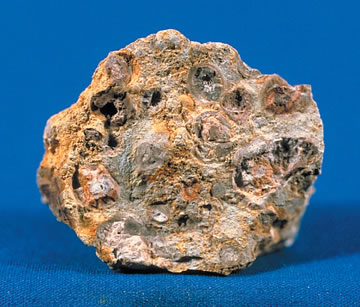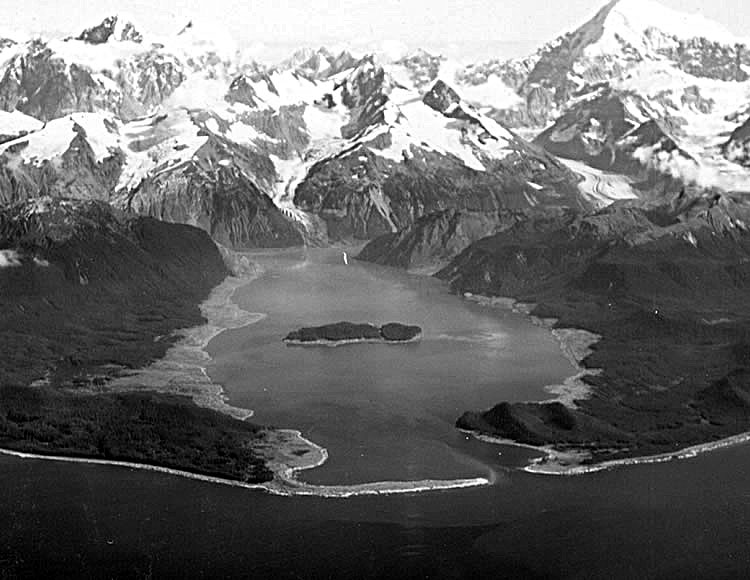The Petrified Forest, Arizona, USA
The Petrified Forest National Park is a protected area located in northeastern Arizona, USA. It covers an area of 146 square miles (380 square kilometers) and is known for its unique and extensive collection of petrified wood. The park is also home to a variety of other geological formations, such as badlands, mesas, and sandstone formations. The park is situated in the Painted Desert, a colorful and vast region of the Southwest known for its stunning scenery and unique geological formations. The park is also home to a diverse range of wildlife, including coyotes, bobcats, and pronghorns. The Petrified Forest National Park is a popular tourist destination and is visited by thousands of visitors each year who come to explore the park’s natural and cultural history.

Contents
Geology of The Petrified Forest
The Petrified Forest National Park is located in the Colorado Plateau, a region characterized by its vast and colorful landscapes. The park sits on top of the Chinle Formation, a rock unit that was deposited during the Late Triassic period, over 200 million years ago. The Chinle Formation is composed of sedimentary rocks, including sandstone, shale, and mudstone, which were deposited in a variety of environments, such as rivers, floodplains, and lakes.
The Chinle Formation is known for its rich fossil record, which includes a wide range of flora and fauna, such as dinosaurs, crocodiles, and amphibians. The formation also contains one of the largest and most colorful concentrations of petrified wood in the world. The petrified wood was formed when the ancient forest was buried by layers of sediment and volcanic ash, and the organic matter in the trees was replaced by minerals such as silica, iron, and manganese. Over time, these minerals formed intricate patterns and colors in the petrified wood.
The Petrified Forest National Park is also home to a variety of other geological formations, such as badlands, mesas, and sandstone formations. These formations were created by the erosion of the Chinle Formation over millions of years, and they provide a unique and colorful backdrop to the petrified wood. The park is also home to a number of unique rock formations, such as the Painted Desert, which is characterized by its vibrant colors and unique patterns.

Formation of Petrified Wood
Petrified wood is formed through a process called permineralization. The process starts when a tree falls and is buried by sediment, such as volcanic ash or river deposits. Over time, the organic matter in the tree is replaced by minerals such as silica, iron, and manganese, which are dissolved in groundwater that flows through the sediment. These minerals fill in the cells and cavities of the tree, preserving its structure and forming a fossil.
The petrification process is a slow one that can take millions of years to complete. As groundwater flows through the sediment, it carries dissolved minerals that accumulate in the cells and cavities of the tree. The minerals then crystallize and harden, forming a durable and colorful fossil. The colors and patterns in petrified wood are created by the different minerals that replace the organic matter in the tree. For example, iron can give petrified wood a reddish-brown color, while manganese can produce shades of pink and purple.
The petrification process is a rare and unique occurrence, and petrified wood is only found in a few locations around the world. The Petrified Forest National Park in Arizona is home to one of the largest and most colorful concentrations of petrified wood in the world, and it provides visitors with a unique glimpse into the ancient forests that once covered the region.

Characteristics of Petrified Wood
Petrified wood has a number of unique characteristics that set it apart from other types of fossils and rocks. Some of the most notable characteristics of petrified wood include:
- Hardness: Petrified wood is incredibly hard and durable, with a Mohs hardness rating of 7. This means that it is resistant to scratches and abrasions and can be polished to a high shine.
- Color: Petrified wood is known for its vibrant and varied colors, which are created by the minerals that replace the organic matter in the tree. The colors can range from red and brown to blue and green, and can form intricate patterns and designs.
- Texture: Petrified wood often has a unique texture that is created by the cellular structure of the original tree. The texture can be smooth or rough, depending on the type of tree and the conditions in which it was petrified.
- Weight: Petrified wood is much heavier than normal wood, as it is composed of dense minerals instead of organic matter.
- Age: Petrified wood is an ancient fossil that can date back millions of years. The petrification process can take thousands of years to complete, which means that petrified wood is a rare and valuable find.
Overall, petrified wood is a fascinating and beautiful natural wonder that provides a unique window into the ancient past.

Human History of The Petrified Forest
The human history of The Petrified Forest National Park dates back thousands of years, with evidence of human habitation and activity found throughout the park. The earliest inhabitants of the region were the ancestral Puebloans, who lived in the area from around 200-1500 CE. The Puebloans left behind a rich legacy of petroglyphs, pictographs, and ruins that can still be seen in the park today.
In more recent history, the area was inhabited by various Native American tribes, including the Navajo and Apache, who used the petrified wood for tools and other objects. In the late 1800s, the region was opened up to European settlement, and a number of homesteaders and ranchers moved into the area.
The Petrified Forest became a national monument in 1906, and was later designated a national park in 1962. Since then, the park has become a popular destination for tourists and nature enthusiasts from around the world, attracting millions of visitors each year.
Today, the park is managed by the National Park Service, and efforts are underway to preserve and protect the petrified wood and other natural wonders of the park for future generations. The park also provides opportunities for education and research, with ongoing studies focused on the geology, ecology, and cultural history of the area.

Visiting The Petrified Forest National Park
Visiting The Petrified Forest National Park can be an incredible experience, offering visitors the chance to explore an ancient landscape of stunning beauty and diversity. Here are some tips and information to help plan your visit:
- Getting there: The park is located in northeastern Arizona, about 30 miles east of Holbrook. The closest airport is in Flagstaff, about 100 miles to the west. Visitors can also reach the park via Interstate 40 or the historic Route 66.
- Entrance fees: The park charges an entrance fee of $30 per vehicle, $25 per motorcycle, or $15 per person for visitors entering on foot, bike, or horseback. Annual passes are also available for $55.
- Activities: The park offers a variety of activities for visitors, including hiking, camping, ranger-led programs, and scenic drives. Some of the most popular attractions in the park include the Painted Desert, the Blue Mesa Trail, and the Crystal Forest.
- Weather: The weather in the park can be extreme, with hot summers and cold winters. Visitors should come prepared with appropriate clothing, sunscreen, and plenty of water.
- Park rules: The park has a number of rules and regulations designed to protect the natural resources and ensure a safe and enjoyable experience for all visitors. Some of the most important rules include staying on designated trails, not disturbing or removing any natural features or artifacts, and following all camping and fire regulations.
Overall, a visit to The Petrified Forest National Park can be an unforgettable experience, providing a unique opportunity to explore the wonders of an ancient and fascinating landscape.

Significance of The Petrified Forest National Park
The Petrified Forest National Park is significant for several reasons, both in terms of its geological history and its cultural heritage. Here are some of the key reasons why the park is an important and valuable resource:
- Geological significance: The park is home to some of the most extensive and colorful petrified wood deposits in the world, with over 200 million years of geological history on display. The park also contains a wide variety of other geological features, including ancient rivers, badlands, and volcanic formations.
- Cultural heritage: The park is home to a rich and diverse cultural history, with evidence of human habitation and activity dating back thousands of years. The park contains numerous archaeological sites, including petroglyphs, ruins, and artifacts left behind by various Native American tribes and other groups.
- Biodiversity: Despite its arid climate and harsh conditions, the park supports a surprisingly diverse range of plant and animal life. The park is home to over 400 different species of plants and animals, including several rare and endangered species.
- Educational and scientific value: The park provides a unique opportunity for education and research, with ongoing studies focused on the geology, ecology, and cultural history of the area. The park also offers a variety of educational programs and resources for visitors of all ages.
Overall, The Petrified Forest National Park is an important and valuable resource, providing a window into the ancient history and cultural heritage of the region, as well as a rich and diverse natural environment for visitors to explore and enjoy.








































































































